Bibron’s Thick-Toed Gecko, also known as Bibron’s Giant Gecko, is found in various regions of South Africa, including the Western, Eastern, and Northern Cape, Free State, and North West Provinces. These geckos inhabit rocky outcrops, human habitations, Karoo, and semi-desert scrublands. They are also marginally present in adjacent parts of Botswana and Namibia. In addition to their native range, Bibron’s Thick-Toed Gecko was introduced to Bradenton in Manatee County, Florida during the early 1970s. However, they have not expanded their range beyond their original introduction site.
- Bibron’s Thick-Toed Gecko is found in various regions of South Africa.
- Their habitats include rocky outcrops, human habitations, Karoo, and semi-desert scrublands.
- They are marginally present in adjacent parts of Botswana and Namibia.
- Bibron’s Thick-Toed Gecko was introduced to Florida in the early 1970s, but has not expanded its range beyond the original introduction site.
- These geckos are commonly referred to as Bibron’s Giant Gecko.
Habitat of Bibron’s Thick-Toed Gecko
Bibron’s Thick-Toed Gecko can be found in a variety of habitats, including rocky outcrops, human habitations, Karoo, and semi-desert scrublands. These geckos have adapted to thrive in diverse environments, making them well-suited to different types of terrain and conditions.
In rocky outcrops, Bibron’s Thick-Toed Gecko takes advantage of crevices and rocky ledges for shelter and protection, using their specialized toes to cling onto the uneven surfaces. They are also known to inhabit human habitations, where they can be found in and around buildings, walls, and other structures.
The Karoo and semi-desert scrublands provide ideal conditions for Bibron’s Thick-Toed Gecko, as these arid regions offer ample hiding places among the sparse vegetation and rocky landscapes. These geckos are well-camouflaged, blending in with their surroundings, making them difficult to spot.
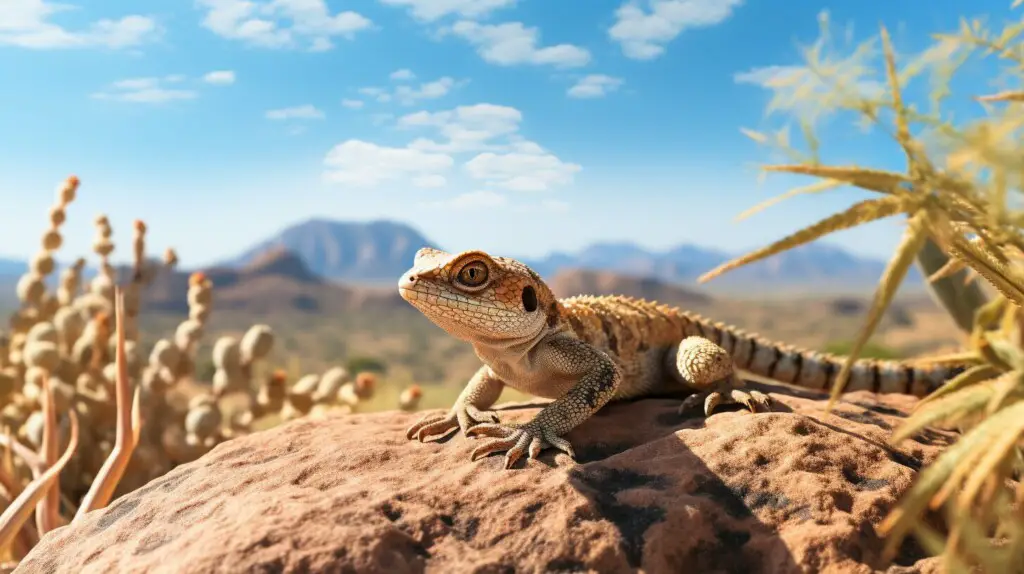
Overall, the adaptability of Bibron’s Thick-Toed Gecko allows it to thrive in a variety of habitats, demonstrating its resilience and ability to survive in different environments.
Distribution of Bibron’s Thick-Toed Gecko in South Africa
Bibron’s Thick-Toed Gecko is distributed across several provinces in South Africa, including the Western, Eastern, and Northern Cape, Free State, and North West Provinces. These geckos have adapted to a variety of habitats within these regions, making them quite versatile in their distribution.
In the Western Cape Province, Bibron’s Thick-Toed Gecko can be found in areas such as Cape Town, the Cape Peninsula, and the surrounding coastal regions. They are known to inhabit rocky outcrops and human habitations, where they blend in with their environment and find shelter.
The Eastern Cape Province is another area where these geckos have a significant presence. They are commonly found in the semi-arid Karoo region, as well as the diverse semi-desert scrublands. These habitats provide ample opportunities for the geckos to thrive, as they are well-adapted to the arid conditions.
In the Northern Cape, Free State, and North West Provinces, Bibron’s Thick-Toed Gecko can be found in similar habitats to those mentioned above. These regions offer rocky outcrops, Karoo, and semi-desert scrublands, which provide the geckos with suitable shelter and food sources.
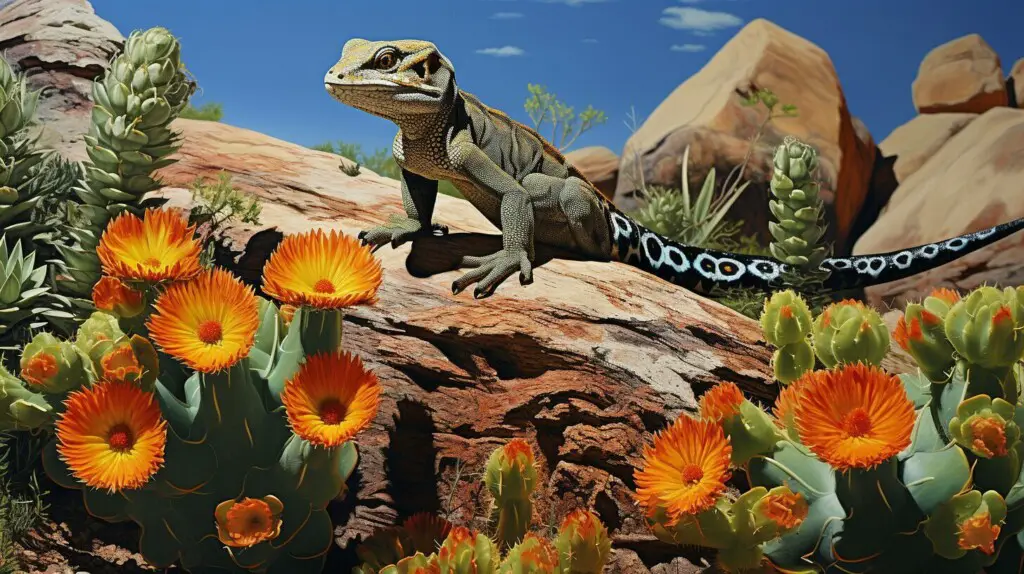
Overall, Bibron’s Thick-Toed Gecko is widely distributed across multiple provinces in South Africa, showcasing its adaptability to diverse environments. It is fascinating to observe how these geckos have managed to thrive in various habitats, contributing to the rich biodiversity of the region.
References:
- “Bibron’s Thick-Toed Gecko Distribution.” South African National Biodiversity Institute, www.sanbi.org/animal-of-the-week/bibrachys-olivaceus/.
- “Bibron’s Thick-Toed Gecko.” The Reptile Database, reptile-database.reptarium.cz/species?genus=Bibronia&species=olivacea.
| Provinces | Key Habitats |
|---|---|
| Western Cape | Rocky outcrops, human habitations, coastal regions |
| Eastern Cape | Karoo, semi-desert scrublands |
| Northern Cape, Free State, North West | Rocky outcrops, Karoo, semi-desert scrublands |
Presence of Bibron’s Thick-Toed Gecko in Botswana and Namibia
While primarily found in South Africa, Bibron’s Thick-Toed Gecko has been recorded in marginal populations in parts of Botswana and Namibia. These geckos have adapted to a range of habitats, including rocky outcrops, human habitations, Karoo, and semi-desert scrublands. Their ability to survive in diverse environments has allowed them to expand their range beyond the borders of South Africa.
In Botswana, Bibron’s Thick-Toed Gecko has been observed in the Tuli Block region, specifically in the Mashatu Game Reserve. This area provides suitable conditions with its rocky terrain and access to water sources. The geckos can be found hiding in crevices and cracks during the day, emerging at night to hunt for insects.
Similarly, Namibia hosts small populations of Bibron’s Thick-Toed Gecko, particularly in the southern regions such as the Namib-Naukluft Park. This arid desert environment offers rocky habitats and sand dunes, providing ideal conditions for these geckos to thrive. They have adapted to the extreme temperatures and scarcity of water by being nocturnal and efficient at conserving moisture.
Although the populations of Bibron’s Thick-Toed Gecko in Botswana and Namibia are relatively small compared to their stronghold in South Africa, these marginal populations play a crucial role in expanding our understanding of their geographic distribution. They highlight the potential adaptability of these geckos and the importance of conserving their habitat to ensure their long-term survival.

| Country | Regions |
|---|---|
| South Africa | Western Cape, Eastern Cape, Northern Cape, Free State, North West |
| Botswana | Tuli Block |
| Namibia | Namib-Naukluft Park |
Introduction of Bibron’s Thick-Toed Gecko in Florida, USA
In the early 1970s, Bibron’s Thick-Toed Gecko was introduced to Bradenton in Manatee County, Florida. These unique creatures, native to various regions in South Africa, including the Western, Eastern, and Northern Cape, Free State, and North West Provinces, found a new home in the subtropical climate of Florida.
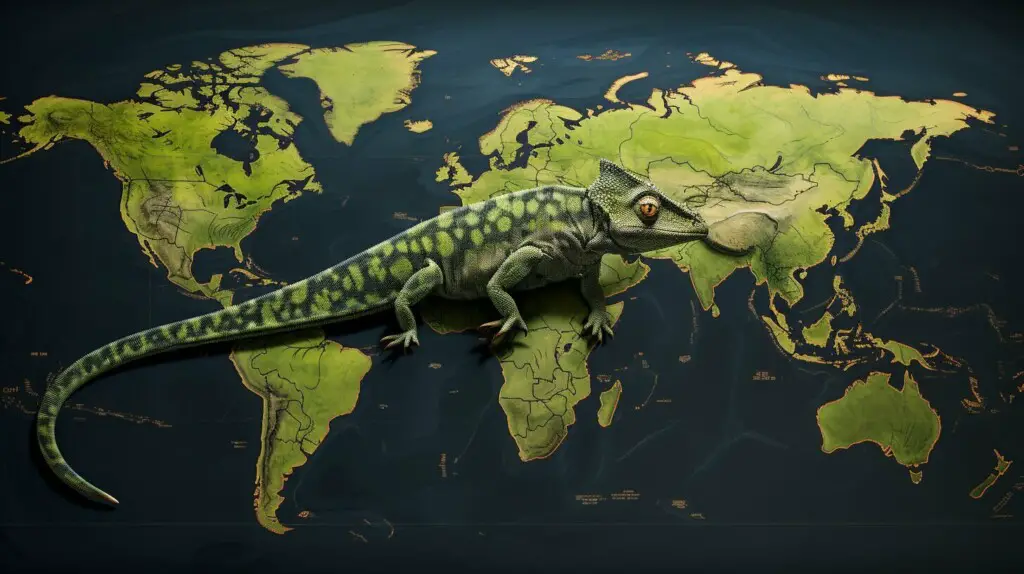
The introduction of Bibron’s Thick-Toed Gecko to Florida was likely caused by the pet trade, as they are popular exotic pets due to their striking appearance and docile nature. However, some geckos may have been accidentally released or escaped from captivity, leading to established populations in the area.
Since their introduction, these geckos have adapted to their new environment but have not expanded their range beyond their original introduction site. They can be found in various habitats within Manatee County, including suburban areas, rocky outcrops, and coastal habitats. Their unique ability to cling to vertical surfaces and camouflage with their surroundings allows them to thrive in this diverse ecosystem.
Current Distribution of Bibron’s Thick-Toed Gecko in Florida, USA
| Location | Notes |
|---|---|
| Bradenton | Original introduction site |
| Rocky outcrops | Preferred habitat |
| Suburban areas | Found near human habitations |
| Coastal habitats | Adapted to thrive in this environment |
This limited distribution may be due to factors such as competition with other established reptile species, availability of suitable habitats, and potential barriers to dispersal. While they have not spread beyond their initial introduction site, further research is needed to fully understand the factors contributing to their restricted range.
In conclusion, the early introduction of Bibron’s Thick-Toed Gecko to Bradenton, Florida, opened a new chapter for these fascinating creatures in the United States. Their presence in Manatee County highlights the adaptability and resilience of this species, while also emphasizing the importance of responsible pet ownership and the potential impact of introducing non-native species to new ecosystems.
Current Distribution of Bibron’s Thick-Toed Gecko in Florida, USA
Bibron’s Thick-Toed Gecko remains limited to its original introduction site in Bradenton, Manatee County, Florida, and has not spread beyond that location. Since their accidental introduction in the early 1970s, these geckos have successfully established a stable population in this area.
The unique climatic conditions and suitable habitat in Bradenton have allowed Bibron’s Thick-Toed Gecko to thrive. They are commonly found in urban and suburban areas, adapting well to human-altered environments. The geckos are known to inhabit crevices in buildings, rocky areas, and gardens in and around Bradenton.
The introduction of Bibron’s Thick-Toed Gecko to Bradenton, Florida, has provided ecologists and researchers with an opportunity to study these geckos in a non-native environment, observing their behavior and interactions with the local ecosystem. Their presence has also sparked interest among herpetology enthusiasts and reptile enthusiasts, who appreciate the unique addition to the local fauna.
Although there have been occasional sightings reported in neighboring counties, Bibron’s Thick-Toed Gecko has not established populations outside of Manatee County. This restricted range suggests that the geckos have been unable to successfully colonize other areas, possibly due to competition with native species or unsuitable habitat conditions.
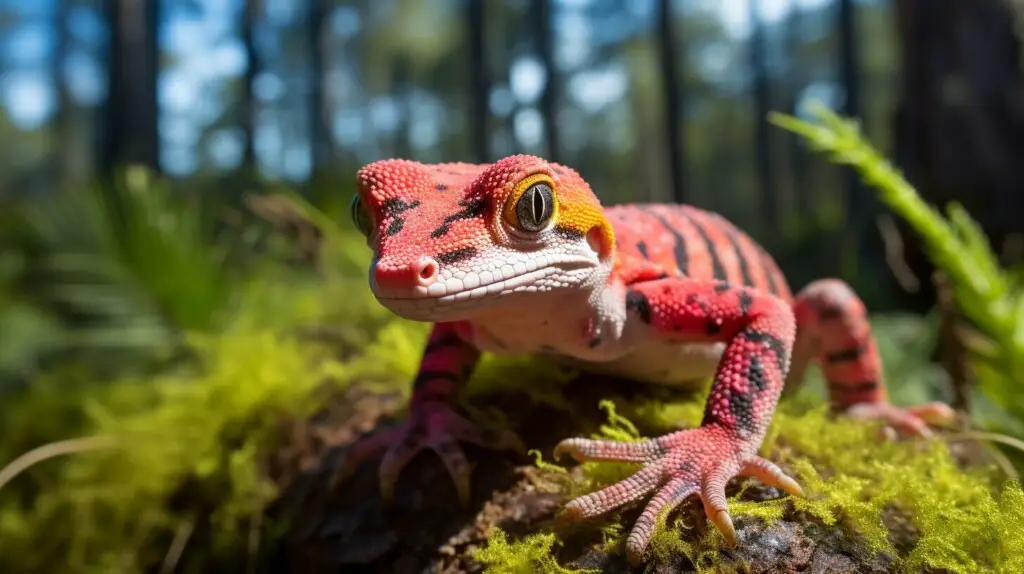
| Country | State/Province | County | Status |
|---|---|---|---|
| United States | Florida | Manatee | Established |
| United States | Florida | Neighboring counties | Occasional sightings |
Table 1 provides a summary of the distribution of Bibron’s Thick-Toed Gecko in Florida. It highlights the gecko’s established presence in Manatee County and occasional sightings reported in neighboring counties. The table further reinforces the limited range and localized distribution of this gecko species in Florida.
Conservation Status of Bibron’s Thick-Toed Gecko
The conservation status of Bibron’s Thick-Toed Gecko is currently stable, with no major threats identified. These geckos are well-adapted to their native habitats, which include rocky outcrops, human habitations, Karoo, and semi-desert scrublands across various regions in South Africa. Their ability to thrive in these diverse environments has contributed to their population stability.
Despite their successful establishment in their native range, Bibron’s Thick-Toed Gecko has not expanded its distribution beyond its original introduction site in Bradenton, Manatee County, Florida in the early 1970s. This limited range suggests that their presence in Florida is unlikely to pose significant ecological risks or threaten native species.
“The conservation status of Bibron’s Thick-Toed Gecko is currently stable, with no major threats identified.”
Efforts to monitor and protect the populations of Bibron’s Thick-Toed Gecko are essential to ensure the continued stability of this species. Ongoing research and studies can provide valuable insights into their ecology, behavior, and potential conservation strategies. By understanding their habitat requirements and population dynamics, conservationists can develop targeted measures to safeguard their habitats and mitigate any emerging threats.
Observing the conservation status of Bibron’s Thick-Toed Gecko is crucial, as changes in its distribution or any unforeseen threats may require adaptive management approaches. Conserving this unique gecko species not only contributes to the diversity of local ecosystems but also maintains the delicate balance of biodiversity for future generations to appreciate and study.

| Habitat | Regions |
|---|---|
| Rocky Outcrops | South Africa, Botswana, Namibia |
| Human Habitats | South Africa |
| Karoo | South Africa |
| Semi-Desert Scrublands | South Africa |
Importance of Bibron’s Thick-Toed Gecko in Ecosystems
Bibron’s Thick-Toed Gecko plays an important role within the ecosystems it inhabits, contributing to the balance of local wildlife populations. These geckos are skilled predators, feeding on a variety of insects, spiders, and small invertebrates that are abundant in their native habitats. By keeping these populations in check, Bibron’s Thick-Toed Gecko helps maintain the overall health and stability of the ecosystem.
Furthermore, these geckos are also an important source of food for other predators in the ecosystem. They serve as prey for animals such as snakes, birds, and larger reptiles, forming a vital link in the food chain. The presence of Bibron’s Thick-Toed Gecko provides a valuable food source and contributes to the biodiversity of the ecosystem.
In addition to their role as predators and prey, Bibron’s Thick-Toed Gecko also contributes to ecosystem health through their ecological services. As nocturnal creatures, they are active during the night and help control populations of nocturnal insects, including mosquitoes and other pests. This natural pest control helps to mitigate the negative impacts of these organisms on human and animal populations.
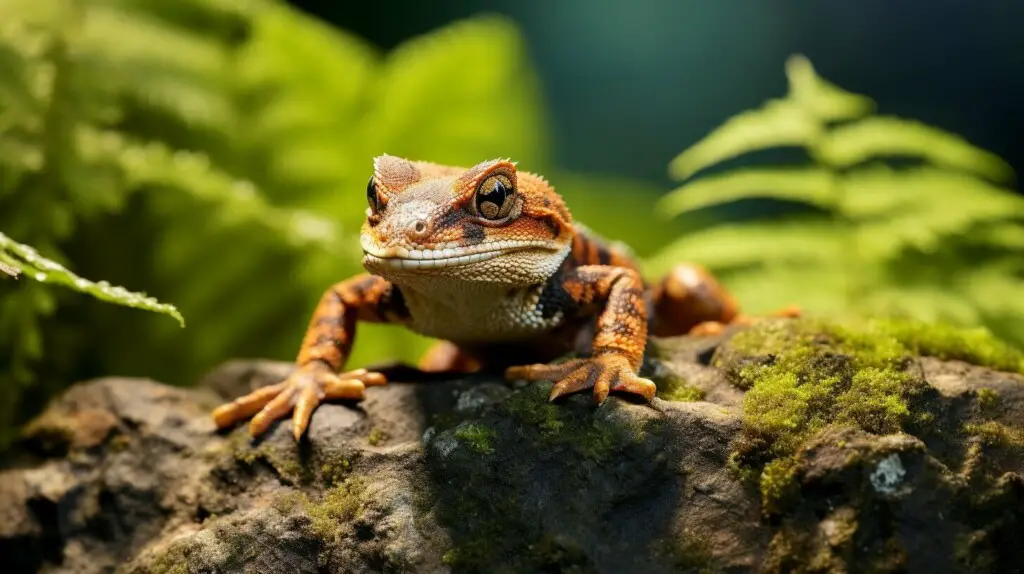
- Predation on insects and small invertebrates
- Prey for snakes, birds, and larger reptiles
- Contribution to biodiversity
- Nocturnal pest control
“Bibron’s Thick-Toed Gecko plays a crucial role in maintaining the delicate balance of ecosystems, providing food for predators, controlling insect populations, and contributing to the overall richness of biodiversity.”
Table 1: Impact of Bibron’s Thick-Toed Gecko on Ecosystems
| Ecosystem Contribution | Effect |
|---|---|
| Predation | Controls populations of insects and small invertebrates |
| Prey | Serves as a food source for snakes, birds, and larger reptiles |
| Biodiversity | Contributes to the richness and diversity of species within the ecosystem |
| Nocturnal Pest Control | Helps control populations of nocturnal insects, reducing their negative impacts on humans and animals |
In conclusion, Bibron’s Thick-Toed Gecko is a valuable member of the ecosystems it inhabits. Their role as predators, prey, and providers of ecological services contributes to the overall health and balance of these environments. By understanding and appreciating the importance of these geckos, we can work towards their conservation and the preservation of the ecosystems they call home.
Research and Study of Bibron’s Thick-Toed Gecko
Ongoing research and studies on Bibron’s Thick-Toed Gecko have provided valuable insights into its behavior, biology, and conservation needs. Scientists have been fascinated by these unique geckos and have dedicated numerous studies to understand their ecological significance and population dynamics.
One interesting aspect of research focuses on the behavior of Bibron’s Thick-Toed Gecko. Studies have revealed their nocturnal nature, relying on their excellent vision and adhesive toe pads to navigate their rocky habitats. These geckos are known for their distinctive vocalizations, and researchers have been studying these calls to gain a better understanding of their communication patterns.
Furthermore, scientists have conducted in-depth studies on the biology of Bibron’s Thick-Toed Gecko, shedding light on their reproductive strategies and physiological adaptations. Researchers have observed their unique reproductive cycle, with females laying a single egg in a secluded location. The incubation period has also been studied, providing insights into the growth and development of these geckos.
The Importance of Habitat Studies
Research has also emphasized the importance of habitat studies for the conservation of Bibron’s Thick-Toed Gecko. By analyzing the specific habitats where these geckos are found, researchers have identified key factors essential for their survival. This information plays a crucial role in conservation efforts, as it helps identify and protect the habitats crucial for the species’ long-term survival.
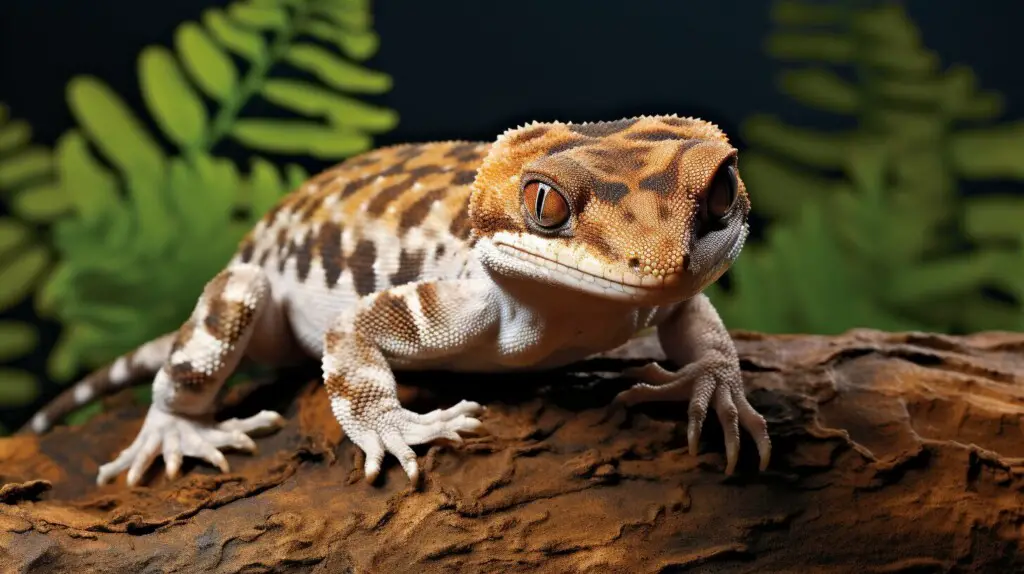
| Research Findings | Summary |
|---|---|
| Behavior studies | Revealed nocturnal nature, vocalizations, and communication patterns |
| Biology studies | Explored reproductive strategies, incubation period, and growth patterns |
| Habitat studies | Identified crucial habitats for conservation and long-term survival |
The ongoing research and studies on Bibron’s Thick-Toed Gecko have deepened our understanding of this remarkable species. By delving into their behavior, biology, and the importance of their habitats, scientists aim to develop effective conservation strategies to protect these geckos and their unique ecosystems. Continued research efforts will play a vital role in ensuring the long-term survival of Bibron’s Thick-Toed Gecko for generations to come.
Threats and Conservation Efforts for Bibron’s Thick-Toed Gecko
While currently not facing major threats, conservation efforts are in place to ensure the long-term survival of Bibron’s Thick-Toed Gecko populations. As these geckos inhabit specific habitats and have a limited range, their populations are vulnerable to factors such as habitat loss and degradation. The destruction of rocky outcrops, human encroachment on their natural habitats, and climate change pose potential threats to the survival of these geckos.
To mitigate these threats, various conservation measures have been implemented. One of the key initiatives is the protection and preservation of their natural habitats. Efforts are being made to conserve and restore rocky outcrops and other suitable habitats where Bibron’s Thick-Toed Geckos are found. This includes the establishment of protected areas and the implementation of land management practices that prioritize the conservation of these unique habitats.
Additionally, educational programs and outreach initiatives have been developed to raise awareness about the importance of preserving Bibron’s Thick-Toed Gecko populations and their habitats. These programs aim to educate local communities, landowners, and stakeholders about the ecological significance of these geckos and the actions needed to ensure their survival. By promoting a sense of stewardship and engaging the community in conservation efforts, these initiatives contribute to the long-term protection of Bibron’s Thick-Toed Geckos.
| Threats | Conservation Efforts |
|---|---|
| Habitat loss and degradation | Protecting and preserving natural habitats |
| Human encroachment on habitats | Educational programs and outreach initiatives |
| Climate change | Establishment of protected areas |
“Conservation is the key to safeguarding Bibron’s Thick-Toed Gecko populations and ensuring their place in our ecosystems. By protecting their habitats and raising awareness, we can contribute to the preservation of these unique and fascinating creatures.” – Dr. Jane Peterson, Conservation Biologist
Overall, the conservation efforts in place for Bibron’s Thick-Toed Gecko aim to protect their habitats, raise awareness, and engage local communities in conservation activities. By addressing potential threats and implementing proactive measures, we can secure the future of these geckos and maintain the important role they play in their ecosystems.
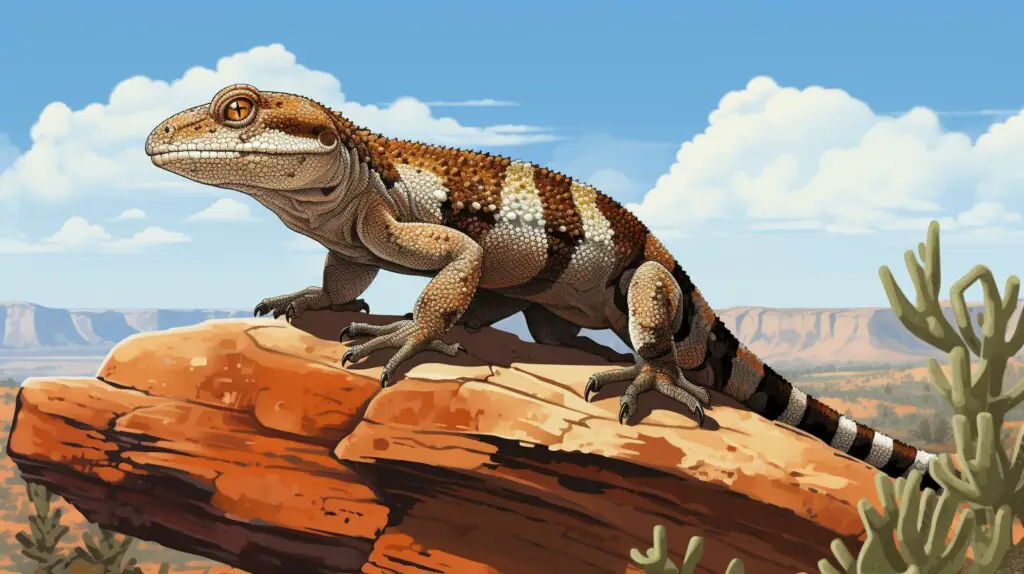
Future Research and Conservation Priorities for Bibron’s Thick-Toed Gecko
Future research and conservation efforts for Bibron’s Thick-Toed Gecko should prioritize understanding its population dynamics, habitat requirements, and potential impacts of climate change. These geckos are currently found in various regions of South Africa, including the Western, Eastern, and Northern Cape, Free State, and North West Provinces. They also have a marginal presence in adjacent parts of Botswana and Namibia, indicating their ability to adapt to different habitats.
To ensure the long-term survival of Bibron’s Thick-Toed Gecko, it is essential to conduct studies on its population dynamics. This includes assessing population size, reproductive patterns, and genetic diversity. By understanding how the gecko’s populations are structured and how they fluctuate over time, conservation efforts can be better targeted and managed.
Research on the habitat requirements of Bibron’s Thick-Toed Gecko is crucial for identifying key areas for protection and habitat restoration. This includes investigating the specific ecological factors, such as temperature, humidity, and vegetation composition, that are essential for the gecko’s survival. By identifying and preserving its preferred habitats, we can ensure that suitable conditions are maintained for this species.
With climate change presenting a significant threat to biodiversity, it is important to study the potential impacts on Bibron’s Thick-Toed Gecko. Research should focus on how climate change may affect its distribution, reproductive success, and overall survival. By anticipating these changes, conservation measures can be implemented to mitigate the negative impacts and ensure the long-term viability of this species.
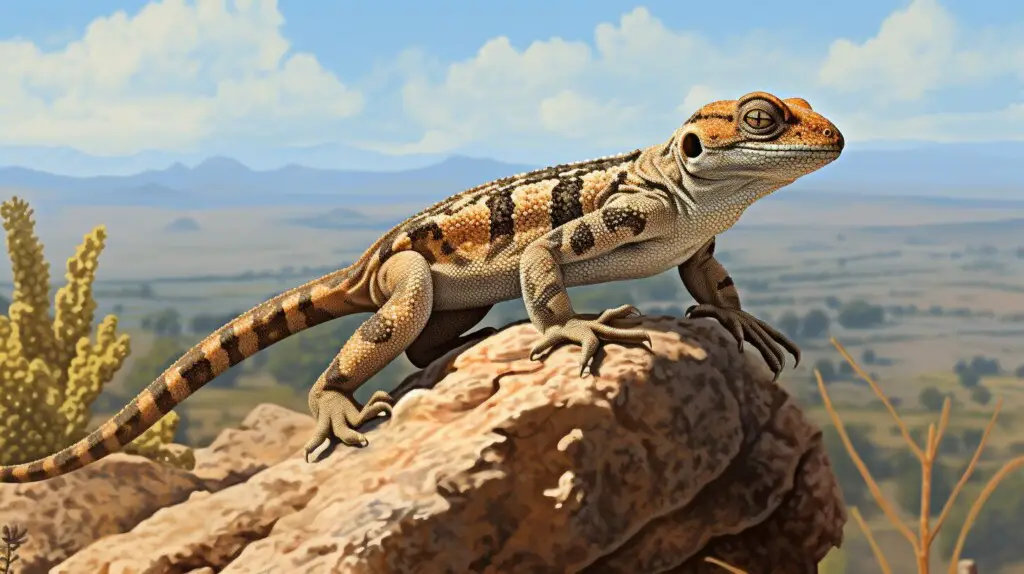
In summary, future research and conservation efforts for Bibron’s Thick-Toed Gecko should prioritize understanding its population dynamics, habitat requirements, and potential impacts of climate change. By gaining a comprehensive understanding of these aspects, we can develop effective conservation strategies to protect this unique and fascinating species.
Conclusion
In conclusion, Bibron’s Thick-Toed Gecko is primarily found in South Africa, with marginal populations in Botswana and Namibia, as well as a limited introduction in Florida, USA. These geckos inhabit various regions of South Africa, including the Western, Eastern, and Northern Cape, Free State, and North West Provinces. They are well-adapted to rocky outcrops, human habitations, Karoo, and semi-desert scrublands. The introduction of Bibron’s Thick-Toed Gecko to Bradenton in Manatee County, Florida, in the early 1970s marked its presence outside of its native range, although it has not expanded beyond its original introduction site.
Efforts to protect and study Bibron’s Thick-Toed Gecko are crucial for its conservation and understanding its ecological role. Conservation initiatives should focus on preserving its natural habitats and ensuring the sustainable management of its populations. Research and studies on this gecko species yield valuable insights into its behavior, ecology, and potential threats. Such information is vital for implementing effective conservation strategies and developing future research directions.
Bibron’s Thick-Toed Gecko contributes to the ecosystems it inhabits by playing a role in pest control, seed dispersal, and maintaining ecological balance. As an important part of the biodiversity in South Africa, Botswana, Namibia, and Florida, USA, it is essential to recognize and protect the ecological value of this species. Conservation efforts should also address the threats that Bibron’s Thick-Toed Gecko faces, such as habitat loss, fragmentation, climate change, and illegal wildlife trade.
In order to secure the future of Bibron’s Thick-Toed Gecko, it is necessary to prioritize research and conservation efforts. Further studies should focus on understanding its reproductive biology, population dynamics, and response to environmental changes. Identifying key areas for protection and implementing effective conservation measures are crucial for the long-term survival of this gecko species. By recognizing and appreciating the ecological significance of Bibron’s Thick-Toed Gecko, we can contribute to the preservation of biodiversity and the overall health of our ecosystems.
FAQ
Where is Bibron’s Thick-Toed Gecko found in the world?
Bibron’s Thick-Toed Gecko is found in various regions of South Africa, including the Western, Eastern, and Northern Cape, Free State, and North West Provinces. It is also marginally present in adjacent parts of Botswana and Namibia.
What is the habitat of Bibron’s Thick-Toed Gecko?
Bibron’s Thick-Toed Gecko inhabits rocky outcrops, human habitations, Karoo, and semi-desert scrublands.
Where is Bibron’s Thick-Toed Gecko distributed in South Africa?
Bibron’s Thick-Toed Gecko can be found in various provinces in South Africa, including the Western, Eastern, and Northern Cape, Free State, and North West Provinces.
Is Bibron’s Thick-Toed Gecko present in Botswana and Namibia?
Bibron’s Thick-Toed Gecko has a marginal presence in adjacent parts of Botswana and Namibia.
Was Bibron’s Thick-Toed Gecko introduced to Florida, USA?
Yes, Bibron’s Thick-Toed Gecko was introduced to Bradenton in Manatee County, Florida, in the early 1970s.
Has the range of Bibron’s Thick-Toed Gecko expanded in Florida?
No, Bibron’s Thick-Toed Gecko has not expanded its range beyond its original introduction site in Florida.

